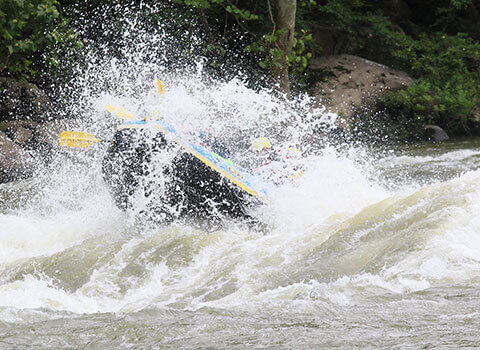When looking at different rafting trips and rivers, you may have noticed that whitewater rafting is classified into several different “grades” or classes of difficult. These different grades are based on a number of factors and can help rafters to determine whether or not they will be comfortable at a certain level. Most of the lower grades are great trips for new or inexperienced rafters, but the higher grades often require a certain level of skill to ensure the safety and enjoyment of all participants.
The most commonly interpreted and referred to system is the International Scale of River Difficulty. This system puts rivers into 5+ different grades or classes, from easiest to most difficult. The scale is often further broken down into + or – categories depending on whether the river is considered to be on the easy or difficult end of the grade. These classes can also change if the amount of “flow” to the river is higher – often in times of heavy rain.
The 6 different classes of white water rafting are:
Grade 1: Very slight and very limited rough areas – may require small maneuvering, but is a relaxing and tranquil trip. This is ideal for the new or nervous rafter.
Grade 2: Portions of rough water and perhaps some rocks. Requires some basic paddling skills but is still suitable for new rafters.
Grade 3: Some moderate rapids and whitewater. This grade requires more maneuvering and skills
Grade 4: Whitewater, medium sized waves, some drops. Experience and maneuvering are extremely helpful on these waters.
Grade 5: More whitewater, larger waves (and more of them), experience is necessary due to the nature of some precise maneuvers.
Some consider there to be a “Grade 6”, which in most cases would be way too difficult and dangerous to attempt to traverse.
There are lots of factors to consider when choosing a whitewater trip, but knowing what the different grades mean and what the different rivers are classified as can help guests in making an informed trip decision.






